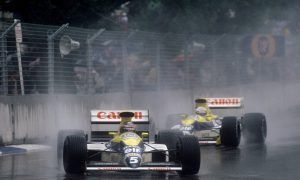
© F1i
HOW TO DEAL WITH BUMPS?
In Monaco, the ride height of the cars is raised (a lot on Thursday, and then less and less, as the driver memorizes the location of the bumps). Engineers modify the suspension settings for essentially mechanical reasons:
“We’re trying to make sure that the tyres stay in contact with the track as much of the time as possible because the thousand horsepower or whatever go down onto the track through this remarkably small piece of rubber,” explains Bob Bell, Renault’s Chief Technical Officer.
“Every time that there’s any disturbance to that contact you lose grip you lose performance, so we’re trying to make sure there are all times the contact patch between the tire and the road by designing the suspension system of the spring rates and the damping. Suspension is also critical for aerodynamics. You wouldn’t want the car to be disturbed as it moves over the track. If it hits a bump it gets moved around and the aerodynamics gets disturbed, so part of the work of the suspension system is to minimize the disturbance to the car bodywork relative to the ground.”
The suspension is also adapted to suit the typical corners, which are much tighter than elsewhere. On a single lap in Monaco, a driver makes an average of 80 significant changes of direction and also makes 50 gear changes per lap.







